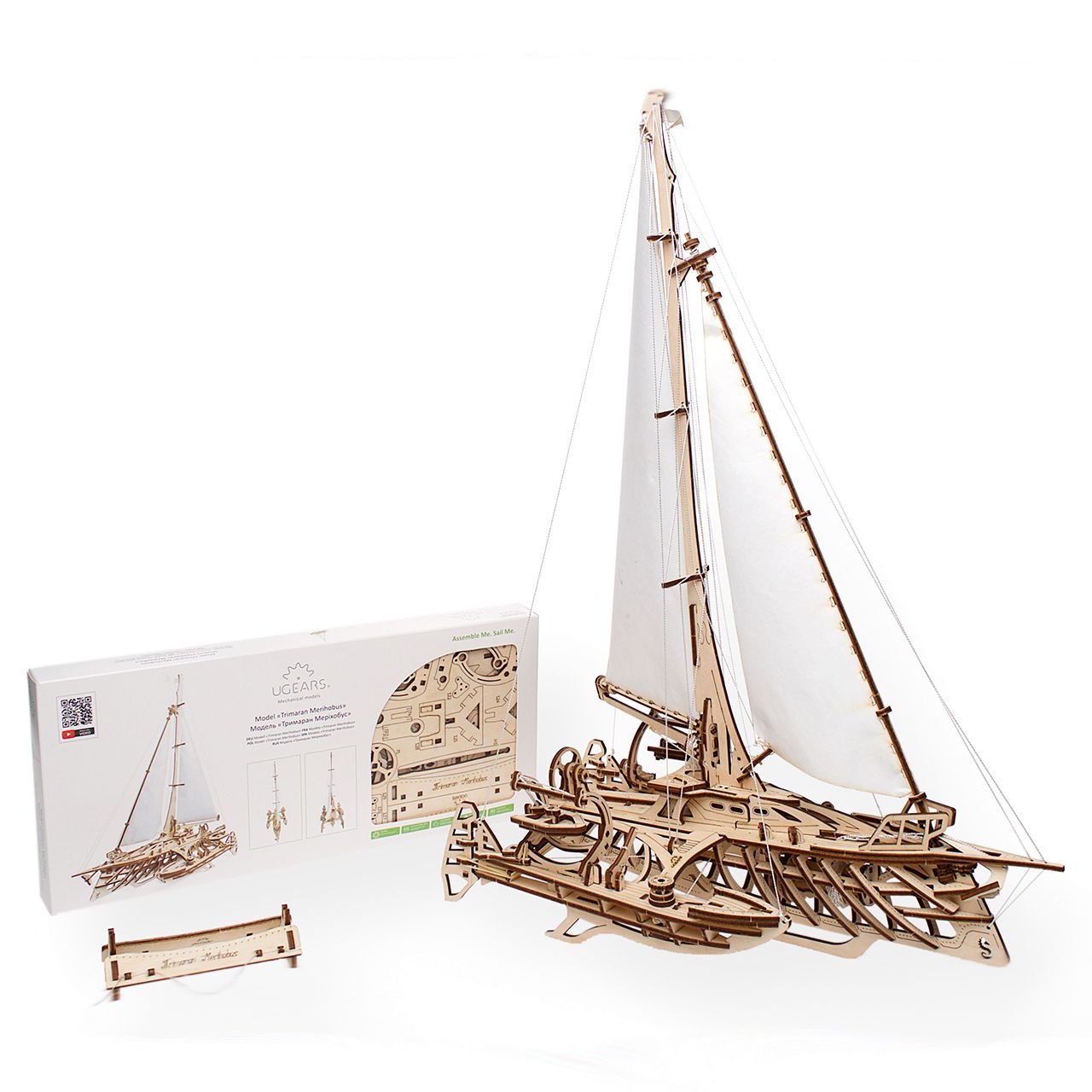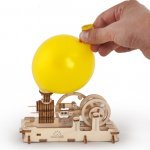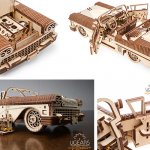Building together: Trimaran Merihobus

Trimaran Merihobus is one of the leading 3D puzzles created by UGears. It consists of 237 parts, while its assembly takes between 9 and 16 hours, and as a result you get a beautiful model of a real sailing vessel! Our Building Together series continues with this article, where we will be focusing on the basic principles of this model’s assembly as well as note the key elements of construction that cannot be ignored in the process and will help you assemble Trimaran Merihobus accurately, fast and easy!
Key features
This model is significantly different from other 3D puzzles because it contains not only wooden parts, but also textile elements, and twines for sails and rigging. Also note the third page of the manual: here you will see a special measuring tool that can be used during the assembly process.

The most difficult steps of the assembly process
Let’s take a closer look at the assembling stages when you should be very careful and pay extra attention:
– Removing parts from wooden frames. If some parts do not give in right away, you just need to cut the lintels with the use of a box cutter. Do not apply too much force when removing parts as this can result in their damage;
– The frame assembly that is shown on pages 4-15 will not be difficult, especially if you have previously worked with UGears 3D puzzles, but page 16 might turn out to be a bit more challenging as you will have to assemble the mooring elements. To do this, you will need to put on wooden discs with holes onto 5 wooden rods. Do not forget to rub the rods with candle wax as it will reduce the resistance and make the task easier;
– Page 25 is about working with twines. Make sure you use the exact length provided in the manual, as well as the order in which the twines are tied together;
– Page 28-31 show the steps of working with sails. To ensure rigidity, they have special holes which are used to fix them onto the wooden frames;
– Pages 32 through 34 deal with the order in which the elements are tied together. Be particularly careful when forming the loops to ensure the maximum strength of the construction;
– Work with knots and loops is the most delicate and complex, therefore, it is shown in detail in the manual on pages 39-49. Keep in mind that you have to literally tie together a real marine rigging in miniature, so the reliability and functionality of the whole structure will depend on the accuracy and durability of the knots;
– The final part of the manual focuses on the assembly of boats and lifting mechanisms called block-and-tackle.
Once you are done with the assembly, make sure to check all the important parts and knots of the structure, which are marked with red exclamation marks in the manual. Following these rules will help you avoid common mistakes and breakdowns and will allow you to enjoy the result of your work to the fullest extent.






